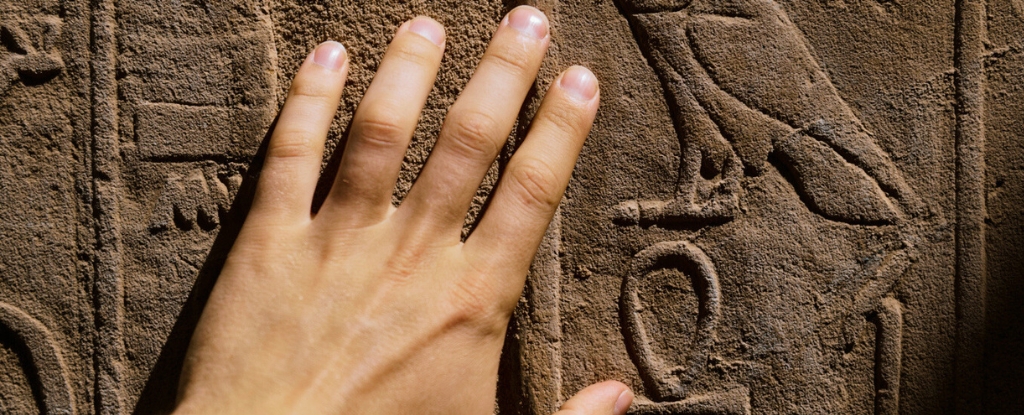
A remarkable archaeological find has emerged in the form of a handprint discovered on an ancient Egyptian artifact, dating back approximately 4,000 years. Researchers from the Fitzwilliam Museum in Cambridge revealed that this unique imprint was located on the base of a clay offering tray, known as a soul house, which may have been used for food offerings in tombs or as a dwelling for souls. The discovery came to light during conservation efforts in preparation for an upcoming exhibition.
The soul house, crafted between 2055-1650 BC, was examined by museum conservators when they uncovered the handprint, an event described by Helen Strudwick, senior curator and Egyptologist at the Fitzwilliam Museum, as an extraordinary moment in her career. “I have never seen such a complete handprint on an Egyptian object before,” Strudwick noted. The handprint was left by the maker of the artifact when they handled it prior to the drying and firing processes.
Connection to Ancient Craftspeople
The imprint clearly reveals all the fingers and where the heel of the hand rested, providing a tangible connection to the individual who created the soul house. Strudwick expressed her excitement about the find, stating, “When you see something like this, you feel very close to the person who left their mark on an object.”
The artifact will be featured in the museum’s upcoming exhibition, Made in Ancient Egypt, which opens on October 3, 2023. This exhibition will highlight the artisans behind various Egyptian creations, including jewelry, ceramics, and sculptures. Strudwick emphasized the importance of understanding the production methods of these ancient objects to ensure their proper preservation.
The Fitzwilliam Museum, located in southeast England, has been conducting research on the creation of such artifacts since 2014. Despite the significance of pottery in ancient Egyptian society, little is known about the potters of that era, who were often perceived to hold a lower social status compared to other craftspeople.
Strudwick remarked on the challenges of identifying the individual behind the handprint, noting its small size, which is similar to her own hand. “If this is a man’s handprint, it’s possible that – given the scale of it – he was a younger person, or it may be that a more junior person in the workshop was responsible for moving these objects out to dry,” she speculated.
Broader Implications for Archaeological Research
The discovery of the handprint adds to the ongoing conversation about the often-overlooked history of Egyptian craftspeople. Strudwick highlighted that advancements in research methods are allowing scholars to learn more about these individuals, their lives, and their aspirations for lasting recognition.
The exhibition will also feature a significant loan of antiquities from the Louvre Museum in France, marking one of the most important collections of its kind to visit the UK in nearly two decades. As the Fitzwilliam Museum prepares to unveil this extraordinary artifact and the stories behind it, the handprint serves as a poignant reminder of the human connections that span millennia.







